French Flag Guide: Design Analysis & Guessing Strategies
Master the French flag in Flagle with our expert guide. Learn essential design elements, color patterns, and proven strategies for quick identification.
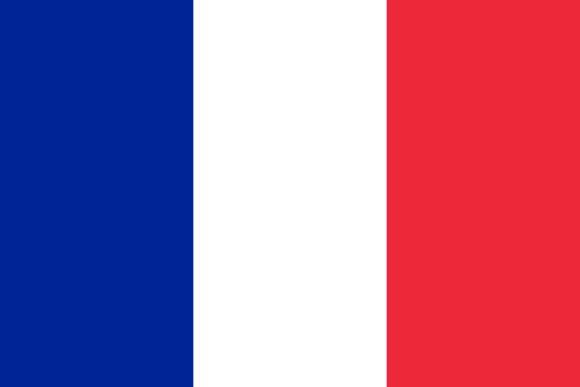
Quick Reference Guide for Flagle Players: Three vertical stripes (blue-white-red), 2:3 ratio, official colors (#002395 blue, #FFFFFF white, #ED2939 red).
The French flag, known as the Tricolore, is one of the most recognizable national flags in the world. Its simple yet powerful design has inspired numerous other flags and carries deep historical and cultural significance. Whether you’re trying to identify the French flag in a flag-guessing game or simply want to understand its meaning, this ultimate guide will break down its design, symbolism, and strategic identification techniques.
Core Identifying Features
Understanding the key elements of the French flag is essential for quick and accurate identification. Below, we analyze its color scheme, symbolism, and proportions.
Color Scheme Analysis
The French flag consists of three vertical stripes of equal width in the following order from left to right:
- Blue (hoist side)
- White (center)
- Red (fly side)
These colors are bold and distinct, making the French flag easy to recognize. However, slight variations in the shades of blue and red have occurred throughout history. The modern version uses a deeper navy blue, which was officially adopted in 2020 to match the original 18th-century design.
Symbolism Breakdown
Each color on the French flag has traditionally been associated with different aspects of French history:
- Blue – Historically associated with Saint Martin and French heraldry
- White – Traditionally linked to the French monarchy
- Red – Historically connected to Saint Denis and Paris
While various interpretations of these colors have emerged over time, today they are most commonly associated with the values of the French Republic: Liberty, Equality, and Fraternity.
Proportional Guidelines
The official proportions of the French flag are 2:3, meaning the height is two-thirds of its width. Each vertical stripe is of equal width, ensuring a balanced and symmetrical design.
A key point to remember is that the French flag follows a vertical tricolor pattern, unlike many other tricolor flags that use horizontal stripes.
Geographic Associations
Flags often reflect a country’s geography, history, and regional influences. Understanding these associations can help you differentiate the French flag from similar ones.
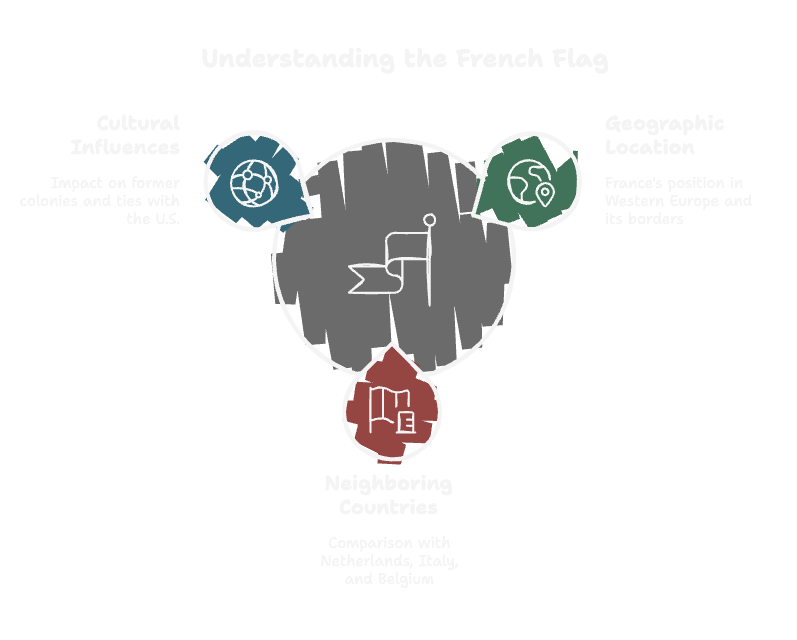
Regional Characteristics
France is located in Western Europe and is bordered by several countries, including Belgium, Germany, Switzerland, Italy, Spain, and Luxembourg. The French flag represents a nation with a rich cultural and historical heritage, deeply tied to European revolutionary movements.
Additionally, France has overseas territories across the world, from the Caribbean to the Pacific, where the Tricolore serves as a unifying emblem.
Neighboring Country Comparisons
Several neighboring countries have flags with similar colors or designs. Here’s how to distinguish them:
- Netherlands – Uses the same red, white, and blue colors but in horizontal stripes instead of vertical.
- Italy – Also has a vertical tricolor, but its colors are green, white, and red, rather than blue, white, and red.
- Belgium – Features a vertical tricolor as well, but with black, yellow, and red instead.
By recognizing these differences, you can avoid common mistakes in flag identification.
Cultural Influences
The French flag has influenced many other national flags, particularly in former French colonies and revolutionary movements. Countries such as Haiti, Chad, and Luxembourg have flags with similar elements due to France’s historical influence.
Additionally, the U.S. flag shares the same red, white, and blue color scheme, reflecting the historical ties between the two nations during the American Revolution.
Flag Guessing Strategies
If you’re playing a flag-guessing game, knowing how to quickly identify the French flag is crucial. Below are some effective strategies to improve your accuracy.
Three-Step Filtering Method
- Check for Vertical Stripes – If the flag has three vertical stripes, you’ve already narrowed down your options significantly.
- Confirm the Color Order – Ensure the stripes are in the correct sequence: blue on the left, white in the middle, red on the right.
- Compare Proportions – The French flag follows a 2:3 ratio, so if the dimensions seem different, it might belong to another country.
By following this method, you can quickly eliminate incorrect choices and pinpoint the French flag with confidence.
Common Mistakes
Even experienced players can make errors when identifying the French flag. Here are some common pitfalls to avoid:
- Confusing it with the Dutch flag – Remember that the Netherlands’ flag has horizontal stripes, not vertical.
- Mixing it up with the Italian flag – The Italian flag has a green stripe instead of blue.
- Misidentifying the Luxembourg flag – Luxembourg’s flag has similar colors but uses a lighter blue and horizontal stripes.
By keeping these distinctions in mind, you can improve your accuracy in flag-guessing games.
Dynamic Identification Techniques
For a more advanced approach, consider these dynamic strategies:
- Memorization through Association – Remember that the French flag’s colors represent the French Revolution and the values of Liberty, Equality, and Fraternity.
- Pattern Recognition – Train your brain to instantly recognize the vertical tricolor pattern.
- Speed Drills – Use online flag quizzes to practice rapid identification under time constraints.
By combining these techniques, you can become a flag-guessing expert.
Cultural Insights
Beyond its design, the French flag carries deep historical and cultural significance. Let’s explore its evolution, modern usage, and some fascinating facts.
Historical Evolution
The Tricolore’s journey through French history mirrors the nation’s political transformations. Originating in the revolutionary fervor of 1789, the flag emerged as a powerful symbol of republican ideals, replacing the royal fleur-de-lis banners. Its current vertical stripe arrangement became official in 1794, though the flag faced temporary suppression during the Bourbon Restoration (1815-1830) when monarchists briefly reinstated the white royal standard.
The 20th century saw the flag endure complex symbolism shifts. During the Nazi occupation (1940-1944), the Vichy regime controversially maintained the Tricolore but superimposed it with the francisque axe emblem, creating a lasting historical paradox. In a remarkable 2020 reform, President Emmanuel Macron authorized reverting to the original “Marianne Blue” shade, a strategic color adjustment that reconnected modern France with its revolutionary roots while addressing digital display requirements.
Modern Usage
Contemporary France strategically deploys its national emblem across multiple domains. Government institutions from local mairies to overseas embassies consistently display the Tricolore, particularly during Bastille Day celebrations when entire cities transform into seas of blue, white and red. The flag’s digital adaptation follows strict chromatic standards (#002395 blue, #FFFFFF white, #ED2939 red) ensuring consistent representation across government websites and virtual platforms.
Educational reforms since 2013 mandate Tricolore displays in all classrooms, embedding national symbolism in learning environments. Corporate entities like Air France leverage its iconic colors in international branding campaigns, while sports teams competing in events like the FIFA World Cup amplify its global recognition. Notably, the flag remains a living political symbol, frequently appearing in both official ceremonies and grassroots demonstrations as a contested emblem of national identity.
Fun Facts
Beyond its official functions, the Tricolore boasts extraordinary cultural footprints. Lyon’s historic silk workshops, using guarded dyeing techniques from the revolutionary era, still produce ceremonial flags for government use. In 2003, a miniature version journeyed to Mars with the ESA’s Beagle 2 lander, marking France’s cosmic aspirations. Naval traditions persist with warships hoisting 10:15 proportion flags when entering foreign ports - a practice dating back to 19th century maritime protocols.
The flag’s cinematic legacy reveals cultural perceptions, appearing in over 300 Hollywood films as visual shorthand for European settings according to the National Cinema Center archives. Its textile heritage intersects with space-age innovation, while the Eiffel Tower’s periodic tricolor illuminations demonstrate how ancient symbolism adapts to modern spectacle. These diverse narratives collectively illustrate how a simple color arrangement evolved into a multidimensional cultural icon.
Additional Resources
For more information about the French flag and its history:
Conclusion
The French flag is more than just a national emblem—it represents a rich history, cultural identity, and revolutionary spirit. By understanding its design, symbolism, and strategic identification techniques, you can confidently recognize it in any flag-guessing game.
Now that you’ve mastered the essentials of the French Tricolore, why not put your knowledge to the test? Our daily challenge offers a perfect opportunity to practice identifying flag fragments alongside players worldwide. If you’re looking to refine your skills further, our unlimited mode lets you take your time mastering the three-step filtering method, especially when distinguishing the French flag from similar designs like those of the Netherlands and Italy.
Next time you see a flag with three vertical stripes in blue, white, and red, you’ll know exactly what it stands for—Liberty, Equality, and Fraternity!